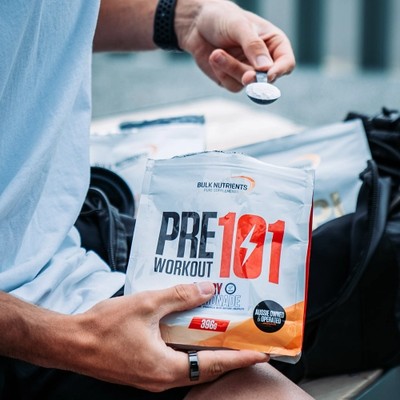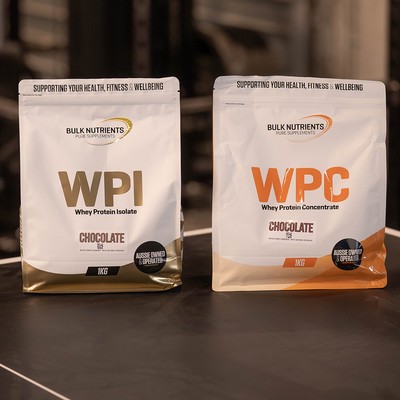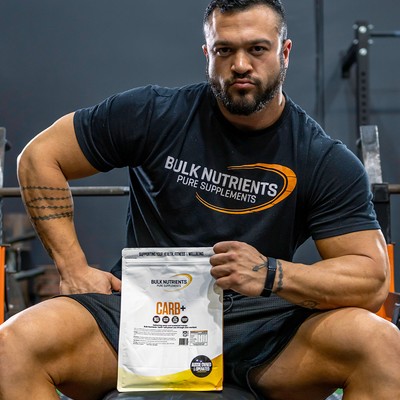How Much Volume Is Too Much Volume?

Muscle protein synthesis and volume
When protein turnover is positive (rate of protein synthesis exceeds the rate of protein degradation) our muscles grow. To increase muscle protein synthesis, we need resistance exercise (weight training). Thus, evaluating how resistance training volume affects rates of muscle protein synthesis might give us an insight into the impact of volume on muscle growth.
Researchers Burd and colleagues carried out a study where they compared two low-volume groups (3 sets versus 1 set of leg extensions) using around 70% of the participant’s one rep max. They observed that muscle protein synthesis was elevated almost double in the 3-set group compared to the 1-set group. Another interesting finding was protein synthesis was sustained for a longer duration in the 3-set group compared to the single set group. Basically, muscles were making more protein (and for a longer time) with 3 sets compared to 1 set, which means 3 sets would be better than 1 for muscle building.
A similar study by Kumar and colleagues in 2012 explored the relationship between resistance training volume and muscle protein synthesis responses in men. The researchers wanted to compare different volumes of resistance training with similar intensities, so they had one group perform 6 sets of 8 reps with 75% of their one-rep max, and another group complete 3 sets of 8 reps with the same loading. The researchers concluded that 6 sets caused greater muscle protein synthesis up to 2 hours post-exercise compared to 3 sets in both young and older men. So, up to this point, you may think that more volume is better right?
Wait a minute…
In another interesting study looking at the impact of training volume on muscle protein synthesis, Damas and colleagues found very small differences in protein synthesis when comparing 12 sets to failure of a quadriceps exercise compared to 8 sets to failure. What does this tell us? Well, it suggests that perhaps the increases in muscle protein synthesis begin to plateau with increased training volume around the 8-12 sets mark.

Reviewing the literature
A meta-analysis conducted by Brad Schoenfeld, Dan Ogborn, and James Krieger compared the effects of varying training volumes on muscle growth according to the current data and showed that there was a dose-response relationship between training volume and hypertrophy. In other words, the higher the volume, the more muscle hypertrophy occurs.
Although assuming a linear relationship looks great in theory, the linear trajectory doesn’t last forever. In other words, more volume can result in more gains, but only to a point. There seems to be an upper limit of volume (per session), where more of it just becomes “junk” due to diminishing anabolic returns, and high fatigue.

So, how much is too much?
Several studies have evaluated different volumes and frequencies across different populations to determine where on average, training volume might be excessive.
For instance, Haun and colleagues conducted a study on young men where subjects were assigned to start at 10 sets per exercise per week at ~60% 1-RM with an average of 4 reps in reserve (RIR). Volume was increased each week with the goal of having subjects perform 32 sets towards the end of the study. Researchers found significant increases in lean body mass from week 1-3, but reduced gains from week 3-6, suggesting that ~20 sets per exercise per week could be the maximal adaptable volume in young resistance-trained men.
Another study by Amirthalingam and colleagues in 2017 aimed to evaluate the effects of a 6-week modified German Volume Training (GVT) program on hypertrophy and strength in resistance-trained young men. Subjects were randomly assigned to either 10-sets or 5-sets (of 10 reps) per training session and were instructed to train 3 times per week for 6 weeks. The researchers found that even though both groups experienced increases in lean body mass, the 10-set group did not achieve significantly more muscle growth than the 5-set group.
As a side note, while we can develop recommendations for maximal adaptable volume or volume ceilings (where more volume does not equal more gains), these recommendations will vary from person to person. Factors including but not limited to training experience, age, and genetics, significantly impact the training volume someone can perform and recover from adequately. Some individuals can work up to 30+ sets per week with no setbacks while others just respond well to lower volumes and find it unsustainable to go higher. What I’m saying is that having these guidelines can be a good starting point, but ultimately finding the ideal training volume for YOU is going to require some experimentation.

Cycling volume: a strategy
Occasional cycling of volume and intensity has been shown to be a helpful strategy for training progression. Low volume periods can give individuals a psychological and physical break from hard training phases, as well as re-sensitise the muscles to the training stimulus.
A study from Ogasawara and colleagues in 2013 compared the effects of a continuous or periodic resistance training program in young men with little to no training experience. One group (continuous group) trained continuously over a 24-week period, while the other group (periodic group) performed 2 cycles of a 6-week training block then 3-week detraining block, after a 6-week initial training period. The authors concluded that the 3-week breaks in between the 6-month program helped individuals gain muscle at a faster rate (muscle memory) than subjects that had been training continuously.
This suggests that subjects who take breaks from training are re-sensitized to the training stimulus when they return to their regular program.
With that said, the data is still quite limited on volume cycling, and at this stage, we can only speculate the benefits of cycling volume as a potential tool for maximising hypertrophy gains.

Practical considerations
As we mentioned, training age, supplementation, and genetics play a significant role in muscle growth and training tolerance. Individuals who are more advanced tend to have higher volume ceilings that they can tolerate, often in the 20 weekly sets per muscle group or more. For instance, some professional bodybuilders often adhere to 30 sets per session with great success.
While more scientific studies are needed to reinforce the current body of literature, current research points towards the optimal training volume for muscle growth (for most of us) to be around 6-12 hard working sets per muscle group per session. However, as we discussed, exact volume prescription is going to vary between people, and will require some experimentation and fine-tuning for the best results!

Jackson Peos has completed a PhD at the University of Western Australia, and has a straightforward approach to nutrition and supplements.
He's completed his BSc in Sports Science, and Exercise & Health, and his BSc (Hons) in Exercise Physiology.
More about Jackson PeosReferences:
- Amirthalingam T, Mavros Y, Wilson GC, Clarke JL, Mitchell L, Hackett DA. Effects of a Modified German Volume Training Program on Muscular Hypertrophy and Strength. J Strength Cond Res. 2017 Nov;31(11):3109-3119. doi: 10.1519/JSC.0000000000001747. PMID: 27941492.
- Burd NA, Holwerda AM, Selby KC, West DW, Staples AW, Cain NE, Cashaback JG, Potvin JR, Baker SK, Phillips SM. Resistance exercise volume affects myofibrillar protein synthesis and anabolic signalling molecule phosphorylation in young men. J Physiol. 2010 Aug 15;588(Pt 16):3119-30. doi: 10.1113/jphysiol.2010.192856. Epub 2010 Jun 25. PMID: 20581041; PMCID: PMC2956949.
- Damas F, Angleri V, Phillips SM, Witard OC, Ugrinowitsch C, Santanielo N, Soligon SD, Costa LAR, Lixandrão ME, Conceição MS, Libardi CA. Myofibrillar protein synthesis and muscle hypertrophy individualized responses to systematically changing resistance training variables in trained young men. J Appl Physiol (1985). 2019 Sep 1;127(3):806-815. doi: 10.1152/japplphysiol.00350.2019. Epub 2019 Jul 3. PMID: 31268828.
- Kumar V, Atherton PJ, Selby A, Rankin D, Williams J, Smith K, Hiscock N, Rennie MJ. Muscle protein synthetic responses to exercise: effects of age, volume, and intensity. J Gerontol A Biol Sci Med Sci. 2012 Nov;67(11):1170-7. doi: 10.1093/gerona/gls141. Epub 2012 Aug 2. PMID: 22859389.
- Ogasawara R, Yasuda T, Ishii N, Abe T. Comparison of muscle hypertrophy following 6-month of continuous and periodic strength training. Eur J Appl Physiol. 2013 Apr;113(4):975-85. doi: 10.1007/s00421-012-2511-9. Epub 2012 Oct 6. PMID: 23053130.
- Schoenfeld BJ, Ogborn D, Krieger JW. Dose-response relationship between weekly resistance training volume and increases in muscle mass: A systematic review and meta-analysis. J Sports Sci. 2017 Jun;35(11):1073-1082. doi: 10.1080/02640414.2016.1210197. Epub 2016 Jul 19. PMID: 27433992.































